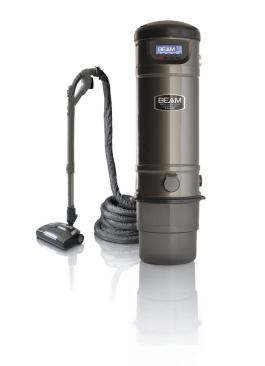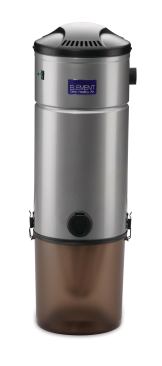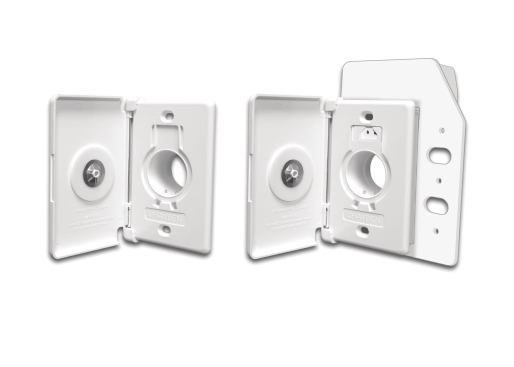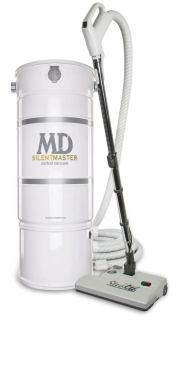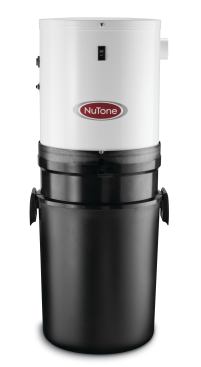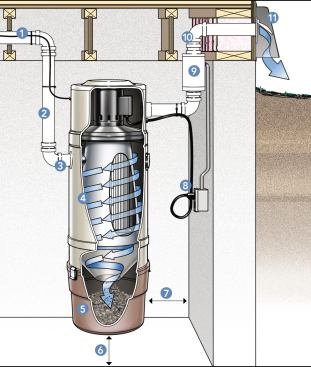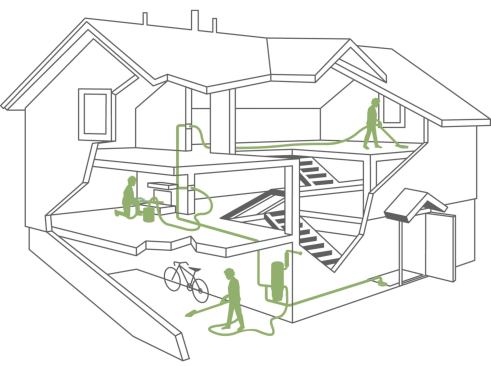Beam. The top-of-line Serenity IQS series comes with a 10-year w…
Noise level is another consideration. Although central vacuum systems’ remote motor location means you can carry on a conversation while vacuuming, quieter systems, as measured in ASTM-tested decibels, indicate better quality in the components used to manufacture the product. Noise reduction usually entails a combination of better motor components, more insulation, and sturdier housing. Mufflers, which mount at the exhaust port, can be purchased both from the manufacturers and after-market accessory suppliers.
Filtration systems come in three basic types: vertical, cyclonic, and inverted. The vertical bag system resembles a conventional upright, collecting dirt and dust particles within a paper bag for disposal. The cyclonic system uses centrifugal force to separate particles from air flow, depositing dirt and most of the dust into a dirt canister for disposal. It requires no added filter, but it must be vented outdoors, as the cyclonic system will not sequester the finest particles. The inverted filter system is similar to the vertical bag, except air is drawn up and across the filter (instead of down into it), allowing gravity to “self-clean” the bag as particles drop off the medium and into the collection bucket below when the system is turned off. The cleanest systems combine cyclonic filtration with a high-quality HEPA filter.
The basic “plumbing,” the tubes and fittings that deliver suction, are generic, much like water pipe that works with any brand. In fact, one manufacturer, Hayden, makes most of the thin-wall PVC pipe and fittings used with all major central vacuum systems. Although it resembles drain pipe, central vac tubing is thinner and of a different diameter, so the two are not interchangeable. Unlike heating ducts, the length of the installation, while consuming more resources, will not appreciably reduce performance. The vacuum remains as powerful at 30 feet from the motor as 3 feet, according to Campbell.
Valve inlets open the airway or seal the system when not in use. The inlets include a low-voltage coupler, which serves to trigger the on-off switch at the motor when you depress the start button on the handle. In new construction, you can also wire for line voltage at the valve to power the agitator brushes for vacuuming carpet. In a retrofit, install the inlet valves within 6 feet of a receptacle to plug in the accessory power cord.
When laying out the valve locations, double-check to ensure you can reach all cleaning surfaces with the standard 30-foot hose. For most floor plans, you’ll need one inlet per 750 square feet of floor area. It’s best to actually survey the cleaning area with hose and handle in hand before deciding on the final location of inlets. You’ll have to supplement the central vac with a conventional lug-around if the inlets aren’t accessible all over the house.
The final consideration for central vacuuming systems is choosing the tools, which include air-powered turbine brushes for hard-surface floors and electric-motor brushes for deep pile carpet. A quiver of hand tools are available to clean crevices, window treatments, ceiling fan blades, car interiors, patio slabs, and pets.
One manufacturer, H-P Products, tackled the most daunting aspect of central vacuuming—hose management—by providing a self-retracting hosepipe. Most manufacturers offer quick-clean amenities, such as Beam’s toekick fitting that sits under a kitchen cabinet for cleaning of spills.
This may all sound like consumer-experience-driven, razzle-dazzle product development, but remember that the most important aspect of any green building component requiring human interface is use. If your central vacuuming system works well and provides convenience, then the homeowner will use it—and breathe all the better.
